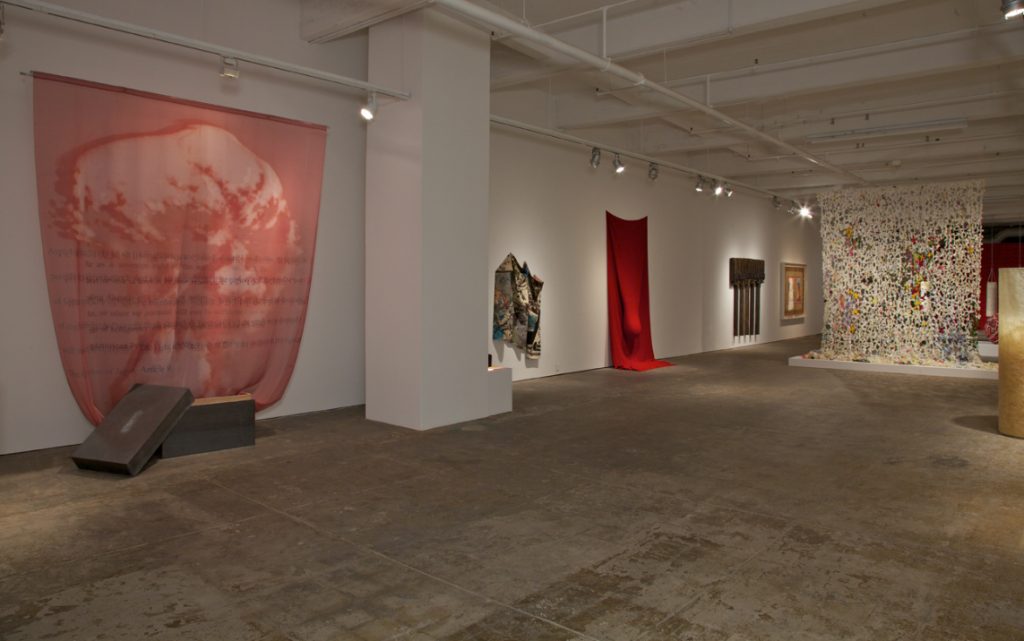Over the course of several years, Yukinori Yanagi made a series of works in collaboration with FWM. In 1995, he created The Forbidden Box, an installation of two large-scale Iris inkjet prints depicting the mushroom cloud created by the explosion of the atomic bomb in Hiroshima. Yanagi selected the image from a 1946 Japanese newspaper. Printed on sheer fabric, the panels are embellished with the words of the Japanese constitution’s Article 9, which renounces the nation’s ability to wage war and was originally drafted by General Douglas MacArthur after the end of World War II. The MacArthur version is printed in English on the rear panel, while the Japanese version— which is written in a much more conciliatory tone—and its English translation can be found on the front panel. The juxtaposition of the two texts allows for a comparison of the cultural differences between the United States and Japan.
Below the billboard-size prints, Yanagi placed an open lead box with the words “Little Boy”—the name of the bomb—inscribed on the lid. The box is a reference to a Japanese folktale called Urashima Taro, taught in elementary schools from the time of imperial rule up until World War II. Urashima Taro was a fisherman who achieved immortality by rescuing a turtle from a group of cruel children. Taro eventually goes to live with a sea goddess in an underworld palace; when he misses his home, the sea goddess gives him a box that will allow his return to the palace as long as he does not open it. Taro opens the box, releasing a great cloud of white smoke that turns him into an old man.
In 1997, Yanagi created a limited edition multiple, Loves Me/Loves Me Not, which is a smaller version of his 1994 sculpture Chrysanthemum Carpet. In the center of the deep red carpet is an impression of a chrysanthemum, the Japanese imperial crest, with its petals—made from brass—torn off and scattered across the surface. Also woven into the carpet is the text “s/he loves me” and “s/he loves me not,” written in the languages of countries once dominated by Japanese imperial rule. With this piece, Yanagi confronts a Japanese myth that a homogenous people were united as one during the emperor’s reign.

